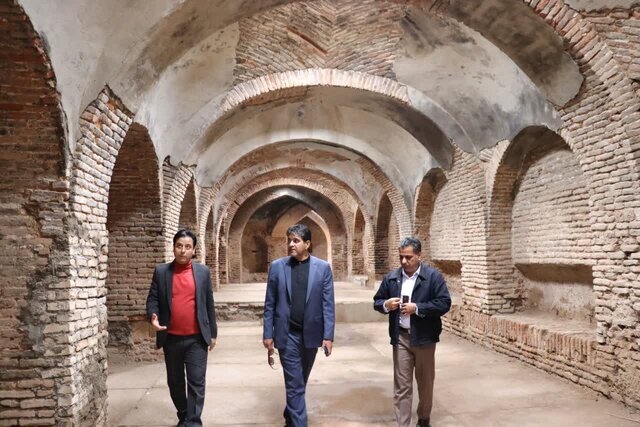UNESCO-listed Caravanserai of Yengi Imam to undergo restoration

TEHRAN - The Caravanserai of Yengi Imam, a UNESCO-listed monument, is slated for restoration, announced Alireza Jalalzai, the head of the national foundation dedicated to UNESCO-designated Iranian Caravanserais, on Saturday.
During a visit to the centuries-old monument, Jalalzai underscored the unique significance of the Yengi Imam Caravanserai, emphasizing its potential impact at both the provincial and national levels.
Jalalzai expressed hope that the forthcoming report on the site's condition would pave the way for substantial funding. "The Caravanserai of Yengi Imam holds significant cultural and historical importance," he remarked.
Highlighting potential environmental threats to the structure, Jalalzai stressed the urgency of restoration to revitalize its appearance and enhance structural integrity.
He outlined a two-phase plan for the caravanserai, with the first phase earmarked for funding dedicated to restoration and strengthening the invaluable structure. The second phase will involve investment packages from individuals or legal entities.
"Through the synergy of cultural heritage, tourism, and handicrafts, this location can become a cultural hub for tourists, offering a unique experience that intertwines cultural richness and historical significance."
In conclusion, the official expressed hope that collaborative efforts could transform the Caravanserai of Yengi Imam into a cultural haven, attracting tourists from far and wide. The restoration project is poised to breathe new life into this historic gem, preserving its legacy for future generations.
Located in Alborz province near Tehran, the caravanserai showcases an exemplary form of Persian architecture, which emerged across the Silk Road. Experts say that the caravanserai offers a unique venue for exchanging goods and traditions among travelers coming from the most diverse cultures.
In September of the previous year, a selection of 54 century-old roadside inns received UNESCO recognition under the name "The Persian Caravanserai." However, this shortlist represents only a small fraction of the numerous caravanserais built along the ancient roads of Iran.
The caravanserai merits transformation into a hotel
Due to its traditional texture and atmospheric surroundings, the establishment of a five-star caravanserai hotel will be a good idea to accommodate domestic and foreign guests and to provide a source of income, according to the provincial tourism chief.
Yengi-Imam caravanserai is one of the prestigious and valuable historical monuments that is situated along the ancient Silk Road, Rahim Khaki added.
In addition, side spaces of the caravanserai can be used for exhibition settings, such as ethnic fairs, handicraft sales exhibits, and local bazaars, he said.
Caravanserai or caravansary is a compound word combining “caravan” with “sara”; the former stands for a group of travelers and the latter means the building. They often had massive portals supported by elevated load-bearing walls. Guest rooms were constructed around the courtyard and stables behind them, with doors in the corners of the yard.
For centuries, caravanserais constituted key parts of a rich circuit of travel and trade by providing shelter, food, and water for caravans, pilgrims, and other trekkers. For many travelers, staying in or even visiting a centuries-old caravanserai can be a broad experience; they have an opportunity to feel the past, and time travel to a forgotten age.
The earliest caravanserais in Iran were built during the Achaemenid era (550 - 330 BC). Centuries later, when Shah Abbas I assumed power from 1588 to 1629, he ordered the construction of a network of caravanserais across the country. Such roadside inns were once constructed along ancient caravan routes in the Muslim world to shelter people, their goods, and animals. The former Silk Road may be the most famous example, dotted with caravanserais.
AFM
Leave a Comment